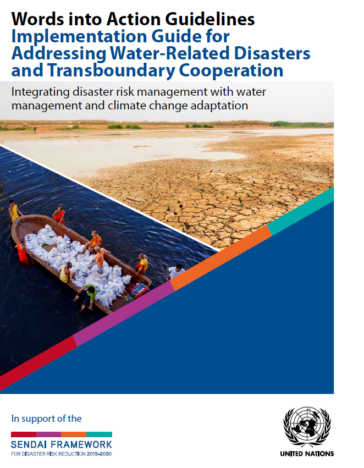
Words into Action Guidelines: Implementation Guide for Addressing Water-Related Disasters and Transboundary Cooperation
-
Climate and disaster risks
-
Community resilience
The new United Nations’ implementation guide for addressing water-related disasters and transboundary cooperation assesses water-related risks under climate change through a transboundary lens. One of the most important recommendations in the report is that integrated water resource management should entail a comprehensive, coordinated and systematic process of planning, organisation and management across the whole river basin or catchment area. This is especially important for reducing disaster risks and for developing and implementing a disaster risk management strategy.
This recommendation lies at the heart of the basin or landscape approach we apply in our projects. This ensures that the entire water and wetlands system is taken into account while trying to reduce disaster risk. The publication also states that “degrading ecosystems such as wetlands further complicate the context of disaster risk” and that “the implementation of the Sendai Framework within a transboundary context should include ecosystem management and restoration, and the use of ecosystems as green infrastructure to mitigate the impacts of disaster risk.” Nature-based solutions are also mentioned as effective measures to prevent disaster risk.

